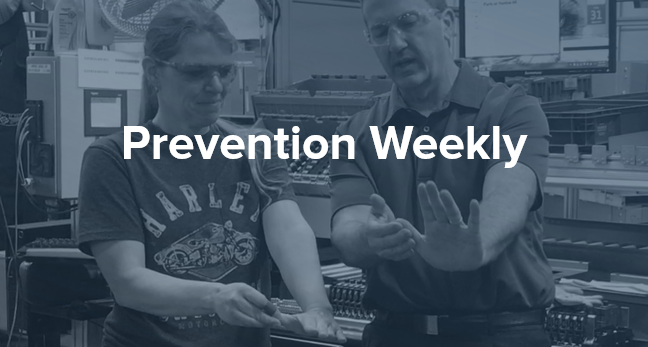Prevention Weekly delivers the best ergonomics, workplace athlete health, and safety leadership news right to your inbox every week.
Featured Article
(Updated and Expanded) The Ultimate Guide to Workplace Ergonomics
Ergonomics at work can seem like a complicated (and almost impossible) discipline for safety mangers to take on. After all, you already wear so many hats and there is only so much time in the day. With that in mind, we’ve put together this resource list so you can get the ball rolling without getting too frustrated.
The Ultimate Guide to Workplace Ergonomics
Ergonomics
Can You Find the Ergonomic Errors?
Can you find the ergonomic errors in this office workstation? Test your ergonomics IQ with this interactive quiz from ErgoTron.
Can You Find the Ergonomic Errors?
Why Ergonomics? Why Prevention?
Ergonomics, injury prevention and wellness are great for people. We all keep track of numbers. When there is an injury, we add a number to the overall count and at the end of a specified period of time we review the numbers. We need to remember that these numbers represent people and that injuries are a painful and costly experience for them.
Why Ergonomics? Why Prevention?
Workplace Athlete Health
6 Ways to Prevent Shoulder Pain in the Office
An extremely common musculoskeletal injury area is in the upper extremities, specifically the neck, shoulders, and upper back regions. These can certainly be painful if you have ever experienced them before! As the old saying goes ‘an ounce of prevention is worth a pound of cure’ so this post examines some counterintuitive approaches to reduce the likelihood of upper extremity injuries that you can put into place TODAY. The unique thing about this post is that these findings are only applicable to the office. Check out our 6 need-to-know facts!
6 Ways to Prevent Shoulder Pain in the Office
Safe Patient Handling Advice from OSHA
One major source of injury to healthcare workers is musculoskeletal disorders (MSDs). In 2010, nursing aides, orderlies, and attendants had the highest rates of MSDs. There were 27,020 cases, which equates to an incidence rate (IR) of 249 per 10,000 workers, more than seven times the average for all industries.
Safety Leadership
Providing Balanced Feedback
Too much of safety is managed by exception. Workers only receive feedback when they do something wrong or unsafe, or when they have an accident. Supervisors and leaders who manage this way are missing out on a simple but highly-effective management tool: positive reinforcement. Studies over the years have shown that positively reinforcing good or safe behavior has an impact on improving worker performance, and some even suggest that enough Balanced Feedback positive reinforcement can partially or completely eliminate the need for correction or punishment.
Ergonomics Plus solutions help proactive safety teams prevent musculoskeletal injuries and advance employee well-being.
